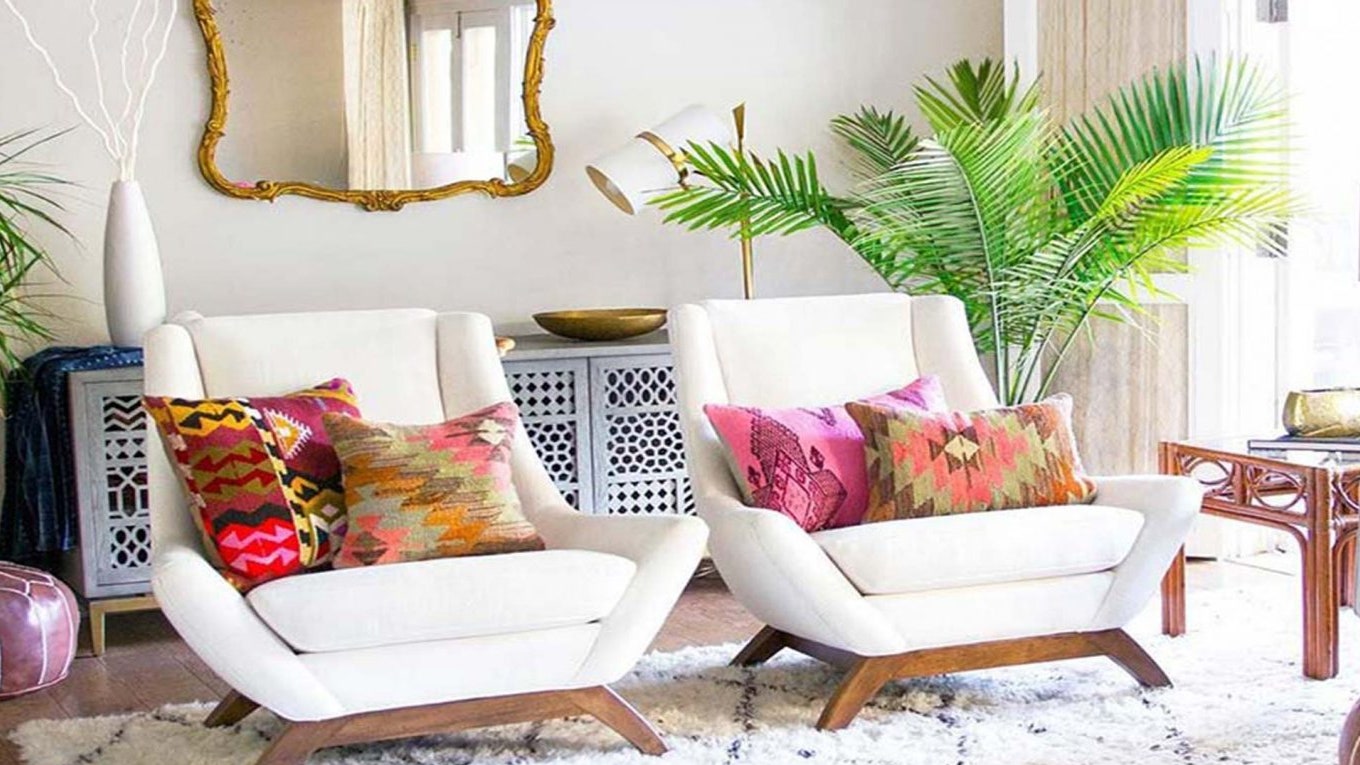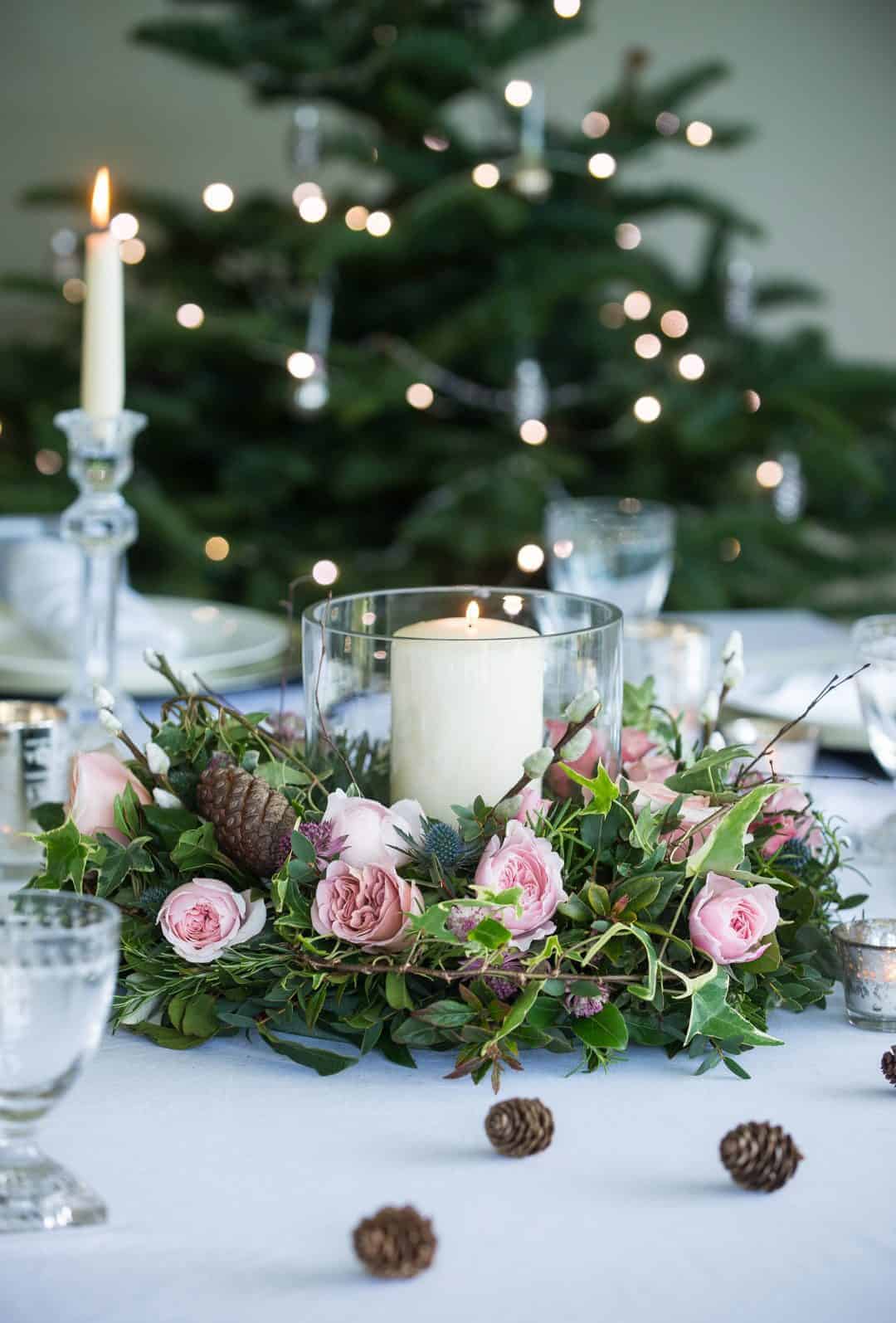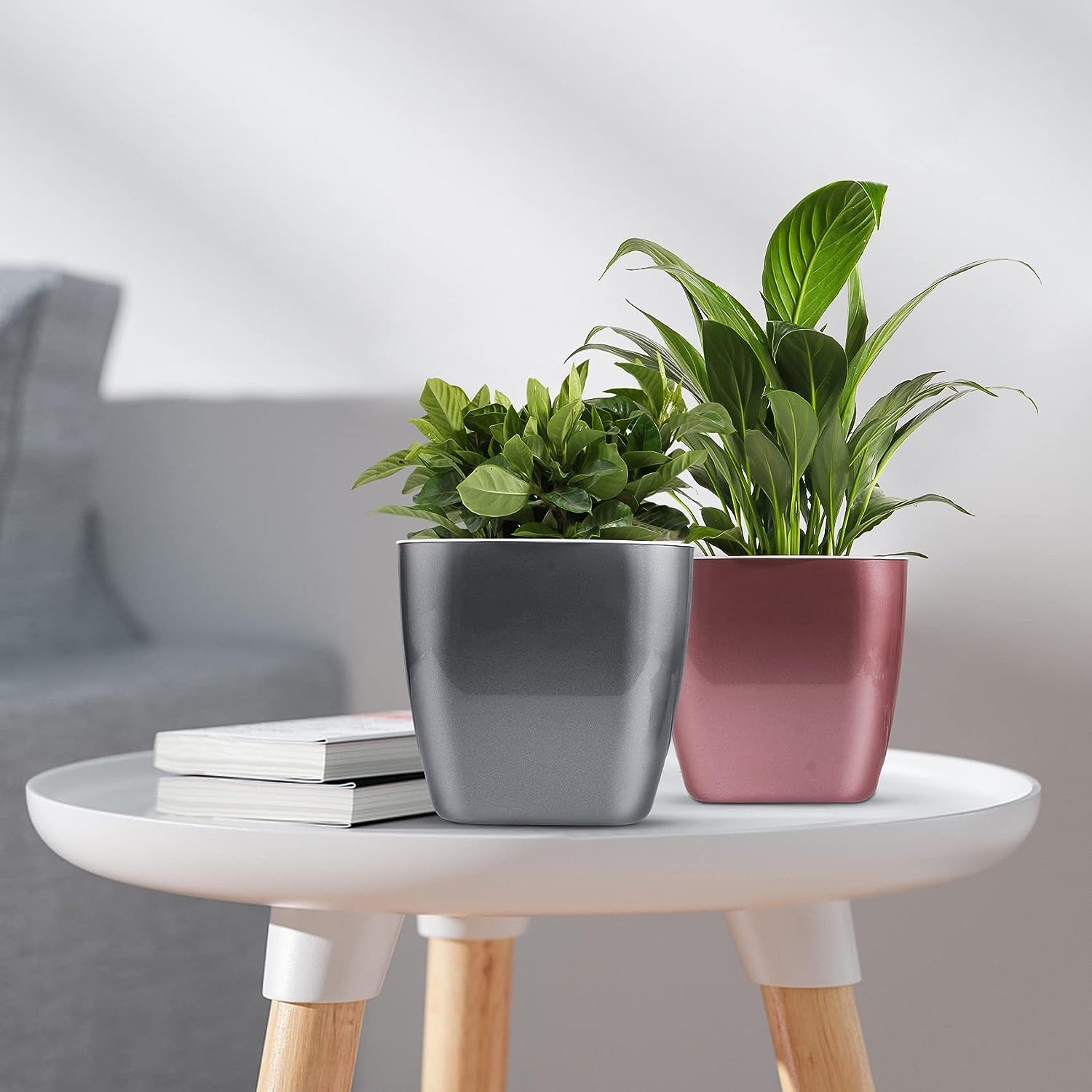Transform your living room into a vibrant oasis by incorporating plants into your decor. With these five easy ideas, you can effortlessly bring nature indoors and create a soothing and refreshing atmosphere. From hanging plants to stylish plant stands, there are a variety of options to suit any space and style. Whether you have a green thumb or are new to plant care, these simple tips will help breathe life into your living room and make it an inviting space for both you and your guests.

This image is property of www.redfin.com.
Choose the Right Plants
Consider the Lighting
When selecting plants for your living room, it’s important to consider the lighting conditions in the space. Take note of how much natural light the room receives throughout the day. If your living room has large windows and receives plenty of sunlight, you can choose plants that thrive in bright, direct light. On the other hand, if your living room has limited natural light, opt for plants that can tolerate lower light conditions, such as pothos or snake plants.
Consider the Size
The size of the plants you choose will depend on the available space in your living room. If you have ample floor space, you can opt for large, statement plants like fiddle leaf figs or palm trees. These plants can add a touch of elegance and bring a sense of freshness to your living room. If you have limited floor space, consider smaller plants that can be placed on side tables or shelves.
Consider the Care Requirements
Before selecting plants for your living room, consider your own lifestyle and how much time and effort you can commit to plant care. Some plants require more attention and care, while others are low-maintenance and forgiving. If you have a busy schedule or are new to plant care, start with plants that are known for their resilience, such as succulents or ZZ plants. These plants can thrive with minimal care and are perfect for beginners.
Use Potted Plants
Select Stylish Planters
To elevate the look of your living room, choose planters that not only serve as vessels for your plants but also contribute to the overall aesthetic of the space. Look for planters made from materials such as ceramic, terracotta, or woven baskets. Consider the color, texture, and shape of the planters to match your existing decor or add a pop of color and style to the room.
Arrange Them Strategically
When arranging potted plants in your living room, think about the overall layout and flow of the space. Place taller plants in corners or next to furniture pieces to add height and create visual interest. Use smaller plants to fill empty spaces on side tables, shelves, or windowsills. Create groupings of plants with different heights and textures to create a visually appealing display.
Group Them Together for Impact
For a statement-making display, consider grouping potted plants together in one area of your living room. This can create a focal point and draw attention to the natural beauty of the plants. Arrange plants of varying sizes and shapes to add dimension and create a lush, jungle-like effect. Grouping plants can also make for easier care as they can share similar lighting and watering needs.
Hang Plants from the Ceiling
Choose Hanging Planters
Hanging plants from the ceiling is an excellent way to utilize vertical space in your living room and add a touch of visual interest. When choosing hanging planters, look for options that complement your overall decor style. Consider materials like macrame, ceramic, or minimalist metal designs. Choose planters with secure hooks or hanging mechanisms to ensure they are safely suspended from the ceiling.
Create a Hanging Plant Display
To create a hanging plant display in your living room, choose a variety of trailing plants that will beautifully cascade down from their hanging planters. Options like English ivy, pothos, or heartleaf philodendron are popular choices for hanging displays. Hang the plants at different heights to add depth and create an eye-catching arrangement. Ensure that the plants have enough space to grow and do not crowd each other.
Opt for Trailing Plants
When selecting plants for hanging displays, consider trailing plants that have long, cascading stems. These plants are perfect for hanging planters as they naturally spill over the sides and create a stunning visual effect. Trailing plants not only add greenery and liveliness to your living room but also create an illusion of height, making the space feel bigger and more inviting.
Create a Plant Wall
Install Plant Shelves
Create a striking focal point in your living room by installing shelves specifically designed for holding plants. These shelves can be attached directly to the wall, allowing you to display a variety of plants in an organized and visually appealing manner. Choose shelves made from materials such as wood or metal that match your overall decor. Consider arranging the plants on the shelves in a way that creates an interesting composition, mixing different sizes, shapes, and colors.
Hang Plants on a Vertical Trellis
If you’re looking to cover a larger portion of the wall with plants, consider installing a vertical trellis. This allows for more flexibility in terms of the number and variety of plants you can incorporate into your living room decor. You can attach small hooks to the trellis to hang potted plants or train climbing plants along the structure. This creates a vibrant, living wall that brings the beauty of nature indoors.
Use Wall-Mounted Planters
For a sleek and modern look, consider using wall-mounted planters to create a plant wall in your living room. These planters can be attached to the wall at different heights, forming a visually appealing arrangement. Look for wall-mounted planters that match your decor style and provide enough space for the plants to grow and thrive. Consider using a mix of trailing plants and upright plants to add variety and texture.

This image is property of blog.mytastefulspace.com.
Add a Plant Stand
Select a Decorative Plant Stand
A plant stand is a versatile piece of furniture that can elevate the aesthetic of your living room while providing a designated space for your plants. Choose a plant stand that complements your existing decor style and serves as a decorative element on its own. Look for stands made from materials like wood, metal, or rattan, which can add warmth and texture to the room.
Choose a Stand for Multiple Plants
If you have several plants that you would like to display together, consider choosing a plant stand with multiple tiers or shelves. This allows you to create a mini indoor garden by arranging plants of different sizes and heights. Be mindful of the weight capacity of the stand and ensure that it is sturdy enough to hold the desired number of plants.
Place it in a Corner or Empty Space
A plant stand is particularly useful for utilizing empty corners or filling up empty spaces in your living room. By placing a plant stand in a strategic location, you can instantly transform a dull corner into a lush green oasis. Consider positioning the plant stand near a window to take advantage of natural light or near a seating area for a cozy and inviting ambiance.
Incorporate Natural Elements
Use Wooden Planters or Stands
Incorporating natural elements into your living room decor can create a harmonious and soothing atmosphere. Choose wooden planters or stands to add warmth and organic texture to the space. Opt for sustainably sourced or reclaimed wood to align with an eco-friendly approach. Wooden planters and stands can complement a variety of decor styles, from modern to bohemian.
Display Plants in Terracotta Pots
Terracotta pots are a classic choice for displaying plants as they provide excellent breathability and allow the soil to dry out properly. These pots have a beautiful earthy tone that adds a rustic touch to your living room decor. Group plants in different sizes and shapes of terracotta pots to create a visually appealing display. Consider using a mix of glazed and unglazed terracotta for added variety.
Introduce Natural Textures to the Decor
In addition to incorporating wooden planters or terracotta pots, consider introducing other natural textures into your living room decor. This can be achieved through the use of woven baskets, rattan furniture, or jute rugs. These natural textures add depth and visual interest to the space, creating a more inviting and grounded atmosphere that complements the presence of plants.

This image is property of www.justaddiceorchids.com.
Combine Plants with Other Decorative Items
Pair Plants with Artwork or Mirrors
An effective way to integrate plants into your living room decor is by pairing them with artwork or mirrors. Hang a piece of artwork or a mirror on the wall behind a plant to create a focal point. Choose artwork or mirrors that complement the colors and style of your plants to create a cohesive look. The combination of living plants and visual art will enhance the overall aesthetic and bring a sense of balance to the room.
Add Plants to Shelves or Bookcases
If you have shelves or bookcases in your living room, take advantage of the vertical space by incorporating plants into the display. Mix books, decorative objects, and plants on the shelves to create an aesthetically pleasing arrangement. Consider using hanging or trailing plants to add an extra layer of visual interest and create a dynamic composition.
Use Plants as Centerpieces
Displaying plants as centerpieces on coffee tables, side tables, or dining tables is an excellent way to incorporate greenery into your living room decor. Choose plants of varying heights and sizes and place them in decorative planters or vases. Consider adding other decorative elements, such as candles or small sculptures, to create a visually appealing arrangement that serves as a focal point in the room.
Utilize Artificial Plants
Select Realistic Artificial Plants
If you’re hesitant about taking care of real plants or have limited natural light in your living room, artificial plants can be a great alternative. Look for high-quality artificial plants that closely resemble their real counterparts. Pay attention to details such as color variation and texture to ensure a realistic appearance. Opt for artificial plants that are made with UV-resistant materials to prevent fading when exposed to sunlight.
Mix and Match Real and Artificial Plants
For a balanced and low-maintenance approach, consider mixing real and artificial plants in your living room decor. Use real plants in areas where they can thrive and be easily cared for, while incorporating artificial plants in darker or hard-to-reach spots. This combination allows you to enjoy the benefits of live plants while ensuring that your living room remains green and vibrant throughout the year.
Consider Low-Maintenance Options
If you opt for artificial plants exclusively, consider choosing low-maintenance options that require minimal cleaning and upkeep. Dust the leaves regularly to keep them looking fresh and wipe the planters or pots clean. Select artificial plants that are easy to install or reposition as needed, allowing you to change the arrangement and layout of your living room without hassle.

This image is property of assets.architecturaldigest.in.
Create a Mini Indoor Garden
Create a Succulent Garden
Succulents are extremely popular plants that are well-suited for indoor gardens due to their low water requirements and resilience. Create a succulent garden in your living room by selecting a variety of succulent plants in different colors, shapes, and sizes. Arrange them in a shallow planter or tray filled with well-draining succulent soil mix. Place the succulent garden on a coffee table, sideboard, or windowsill to add a touch of natural beauty.
Design a Herb Garden
If you’re a fan of cooking or simply enjoy having fresh herbs at your fingertips, consider designing an indoor herb garden in your living room. Choose aromatic herbs like basil, rosemary, and mint that can thrive indoors. Use individual pots or a long planter with divided sections to plant the herbs. Place the herb garden near a window where the plants can receive adequate sunlight. Not only will this provide you with fresh herbs for culinary experiments, but it will also infuse your living room with delightful aromas.
Build a Terrarium
Terrariums are self-contained ecosystems that can be fascinating to create and observe. Building a terrarium in your living room allows you to bring a miniature garden to life in a glass container. Start by selecting a clear glass container with a lid, such as a jar or a fish tank. Layer the bottom with rocks or pebbles for drainage, followed by a layer of activated charcoal to keep the terrarium fresh. Add a layer of well-draining soil and carefully arrange a variety of small plants, mosses, and other decorative elements. Mist the terrarium occasionally to maintain the humidity levels. Place the terrarium on a side table or shelf and marvel at this captivating piece of living art.
Consider Plant Placement
Choose Focal Points
When placing plants in your living room, consider creating focal points that draw attention and bring balance to the space. Place a large, statement plant near a fireplace, a window, or an empty wall to add visual interest and create a striking focal point. Smaller plants can be strategically placed near seating areas or on side tables to provide a sense of cohesiveness and symmetry. By choosing focal points, you can guide the eye and create a harmonious flow in your living room.
Balance Plants in the Room
Achieving a balanced look in your living room involves distributing plants in a way that creates visual equilibrium. If you have larger plants on one side of the room, balance them out with smaller plants or plant groupings on the opposite side. Consider the height, color, and texture of the plants when arranging them to maintain balance. By evenly dispersing plants throughout the living room, you can achieve a visually pleasing and harmonious environment.
Work with the Existing Décor
When incorporating plants into your living room decor, it’s important to consider your existing furniture, color palette, and overall style. Choose plants that complement the existing decor elements and enhance the overall ambiance of the room. For example, if your living room has a minimalist and contemporary design, opt for sleek planters and plants with clean lines. If your decor leans towards bohemian or eclectic, experiment with a variety of plants and decorative containers to create a vibrant and eclectic look.
By following these easy ways to incorporate plants into your living room decor, you can transform your space into a lush and inviting oasis. Whether you choose hanging plants, create a plant wall, or utilize potted plants, adding greenery to your living room can have a positive impact on your mood and overall well-being. With careful consideration of lighting, plant selection, and overall placement, you can create a living room that is both stylish and connected to nature. Get started on your plant decor journey and enjoy the countless benefits that plants bring to your living space!

This image is property of www.plantz.com.




